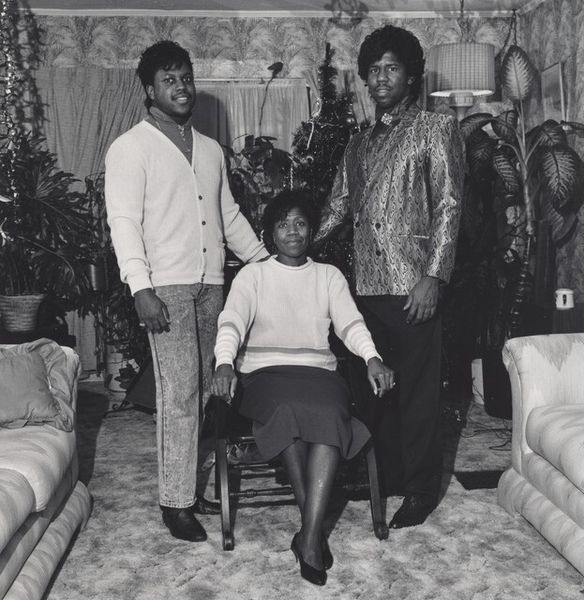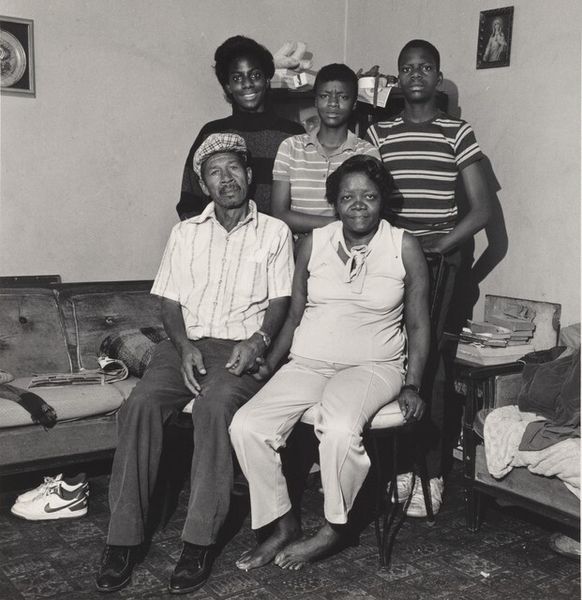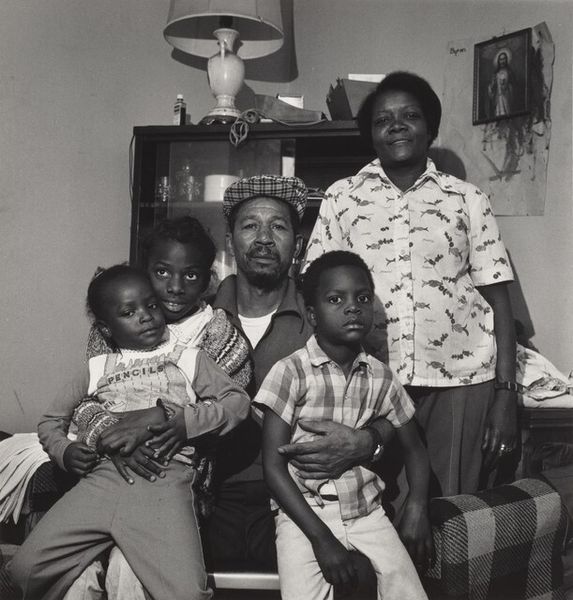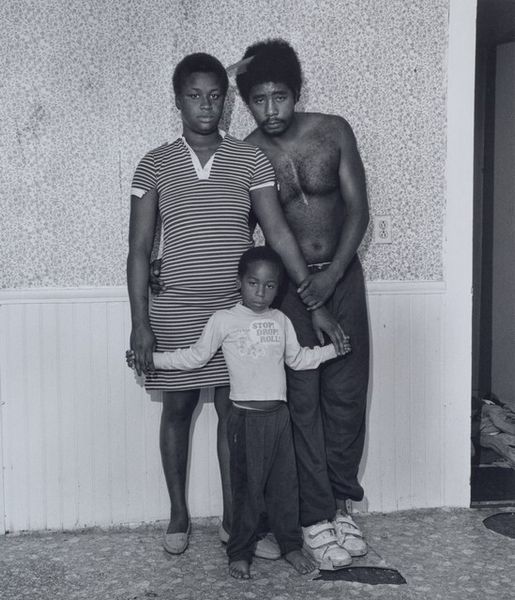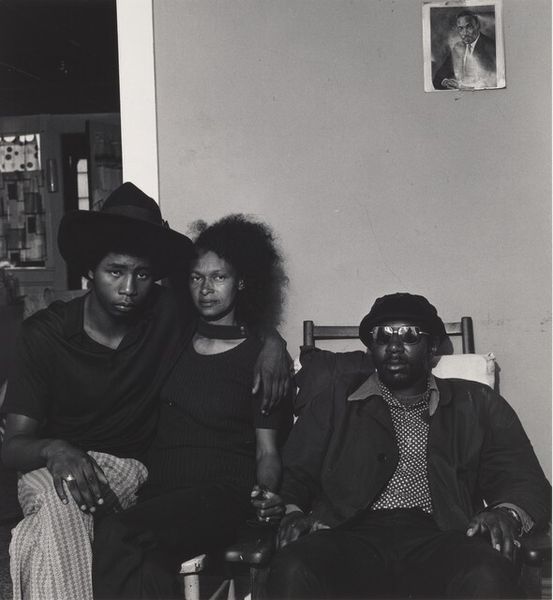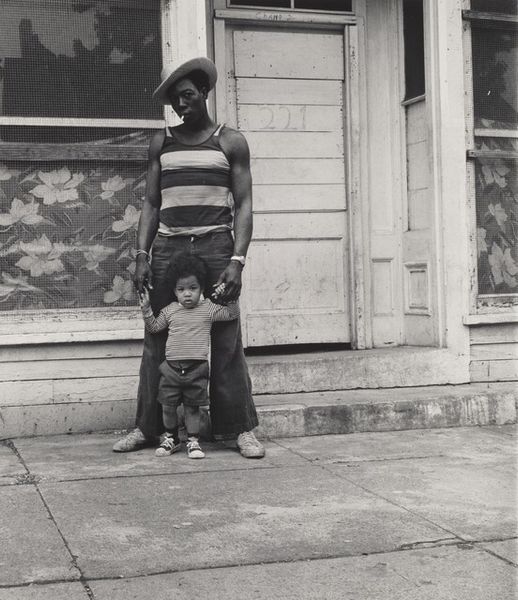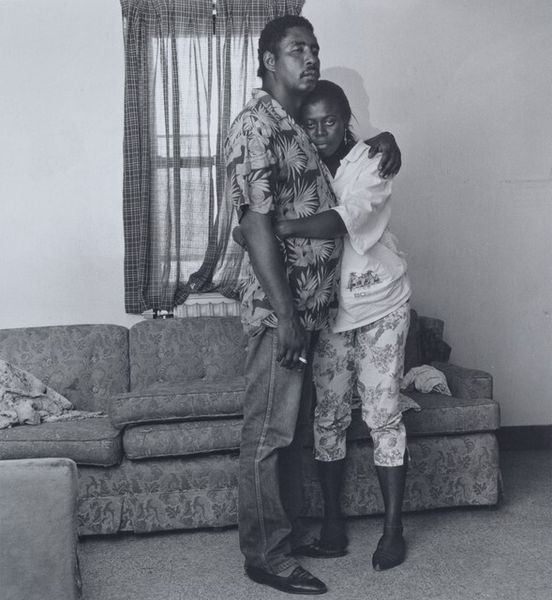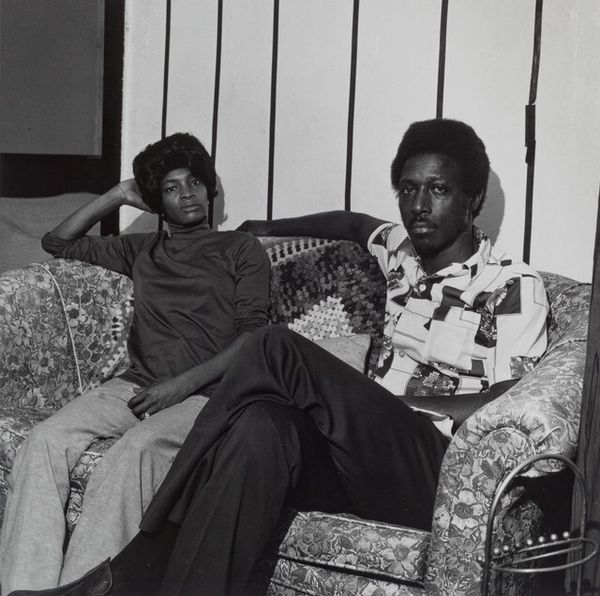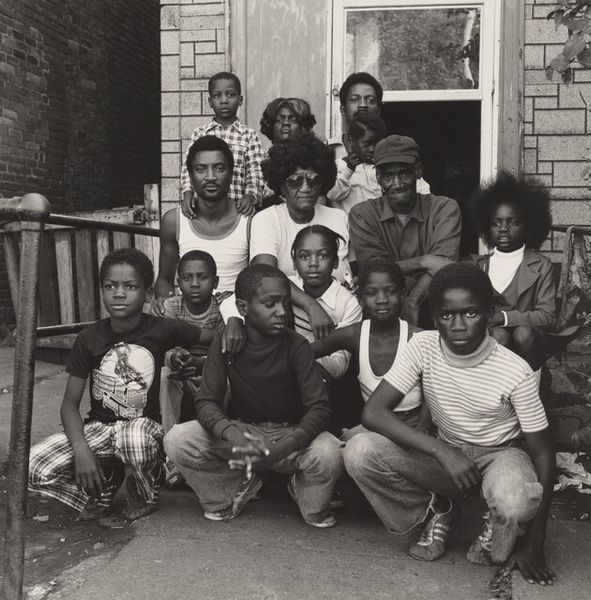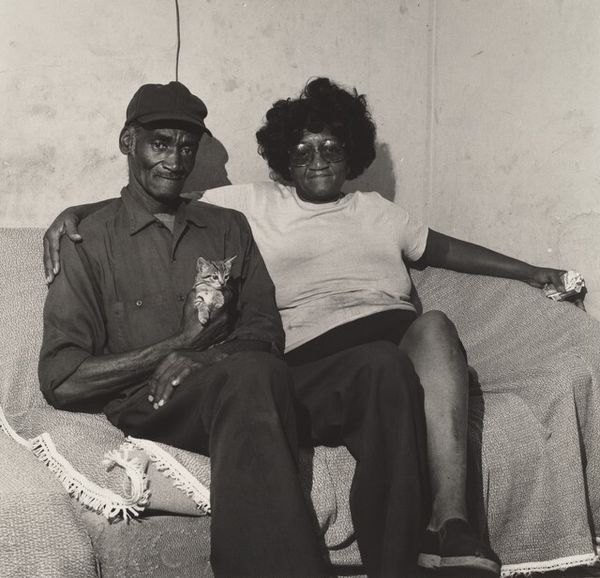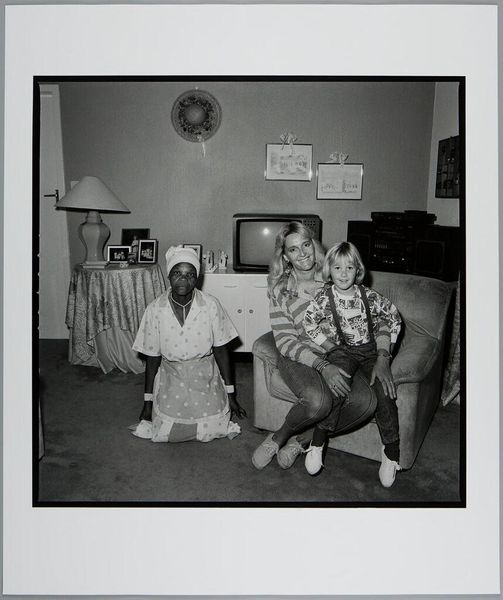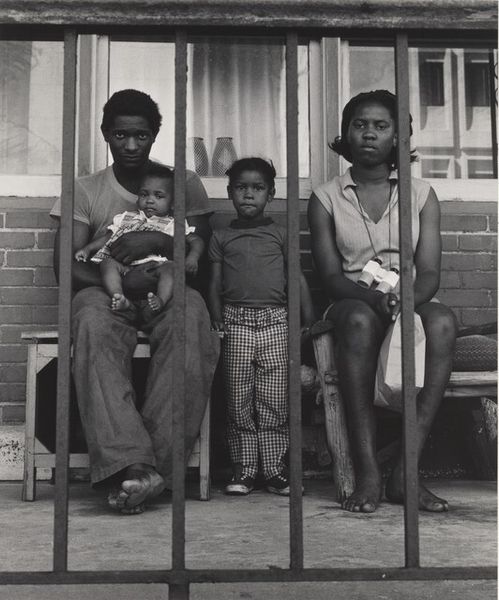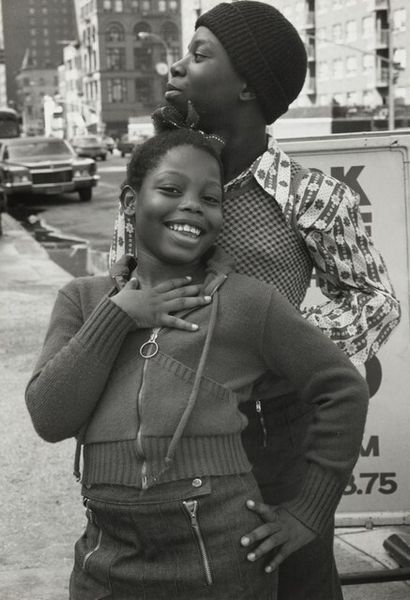
Doris McKinney at Home, Republic Steel (Working People series) 1978
0:00
0:00
photography, gelatin-silver-print
#
portrait
#
black and white photography
#
social-realism
#
photography
#
black-arts-movement
#
group-portraits
#
black and white
#
gelatin-silver-print
#
monochrome
#
realism
Dimensions: image: 18.3 x 17.5 cm (7 3/16 x 6 7/8 in.) sheet: 25.3 x 20.3 cm (9 15/16 x 8 in.)
Copyright: National Gallery of Art: CC0 1.0
Curator: Here we have Milton Rogovin's 1978 gelatin-silver print, "Doris McKinney at Home, Republic Steel," from his "Working People" series. Editor: What strikes me immediately is how this monochrome image achieves such texture—look at that bold, patterned wallpaper and the varied surfaces of the clothing. It’s an incredibly intimate portrait. Curator: It really is. Rogovin dedicated much of his career to documenting the lives of working-class families, particularly those in industrial sectors. The "Working People" series aimed to offer visibility to the lives and environments of these laborers beyond their role in production. Editor: That commitment is so important, and visible. One senses it isn't just about depicting Republic Steel as a workplace. Rogovin captures the family’s private life, the interior space carefully curated with personal items – trophies, plants, pictures – all elements reflecting the family’s values and history. What I also wonder, materially, are those specific objects manufactured and sold, or custom-made items cherished by the family? Curator: That is precisely where Rogovin's artistic project opens a space for the recognition of the domestic as the stage where broader struggles play out. Republic Steel certainly marks this family's life, placing the labor practices and corporate culture in a dialogue with this home, this very wallpaper you identified. Editor: It is a space that is decidedly of the Black Arts Movement. Rogovin creates visual testaments celebrating the interior lives of African-American working-class families with social realism, providing an alternative to dominant representations, actively pushing back against racist depictions. Curator: Rogovin's approach raises important questions about representation, about whose stories are told and how. He's giving agency to his subjects, countering prevailing stereotypes with nuanced, personal narratives. The series challenges institutional invisibility by embedding his sitter into art history. Editor: Indeed. It goes beyond simply 'showing' – it insists on seeing. Rogovin has created such a lasting monument to Doris Mckinney's work, endurance and care. Curator: By putting faces and lives to a particular historical moment in the context of industrial production. It also speaks to art's responsibility. It reveals how we can reassess social issues with such carefully staged intimate settings, where people pose and work for and with the artist in their private spaces. Editor: This photograph asks us to look at how we connect these representations with how we live our own lives.
Comments
No comments
Be the first to comment and join the conversation on the ultimate creative platform.
